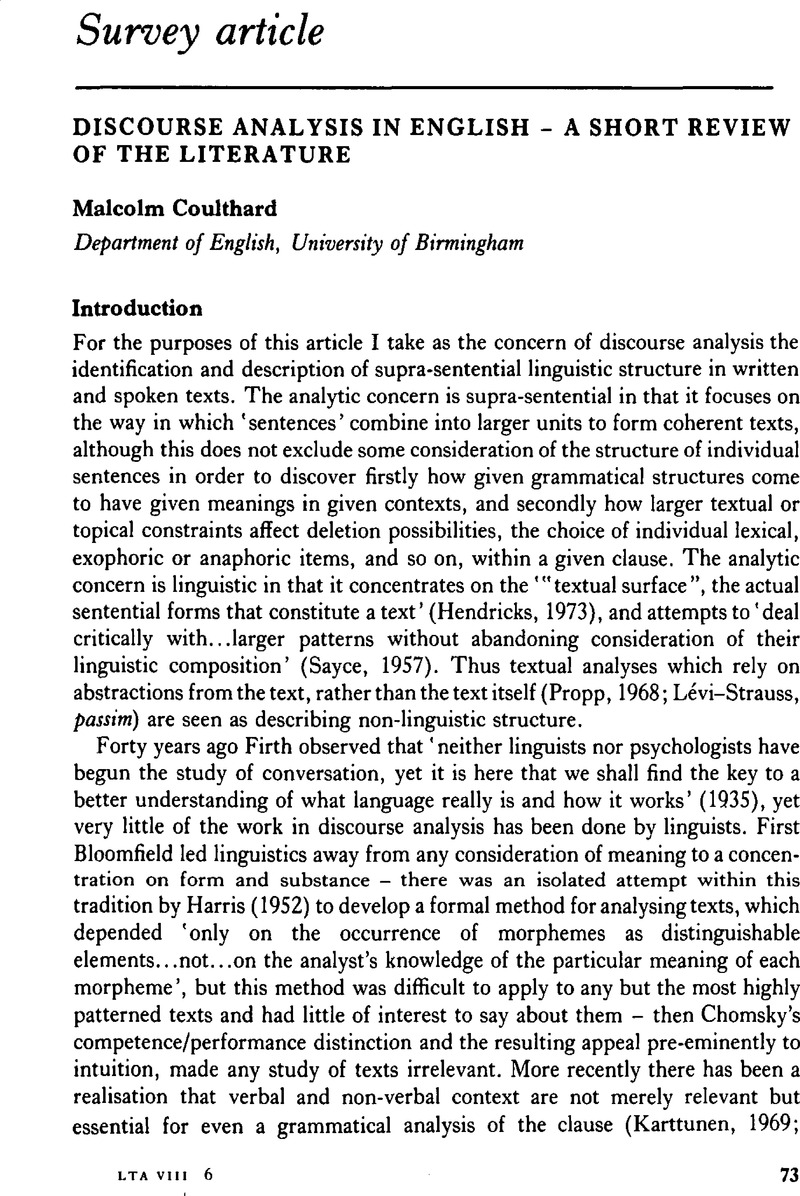Crossref Citations
This article has been cited by the following publications. This list is generated based on data provided by Crossref.
Aarts, F. G. A. M.
1976.
The description of linguistic variation in English: From firth till the present day*.
English Studies,
Vol. 57,
Issue. 3,
p.
239.
Moody, K.W.
1976.
A Type of Exercise for Developing Prediction Skills in Reading.
RELC Journal,
Vol. 7,
Issue. 1,
p.
13.
1977.
Book Reviews.
Programmed Learning and Educational Technology,
Vol. 14,
Issue. 4,
p.
324.
BRENNER, STEN‐OLOF
and
HJELMQUIST, ERLAND
1978.
The production and understanding of utterances in dyadic communication.
Scandinavian Journal of Psychology,
Vol. 19,
Issue. 1,
p.
121.
Butler, C. S.
1979.
Recent Developments in Systemic Linguistics.
Language Teaching & Linguistics: Abstracts,
Vol. 12,
Issue. 2,
p.
71.
Jensen, Eva Dam
and
Vinther, Thora
1983.
The authentic versus easy conflict in foreign language material—A report on experiences with production and exploitation of video in FLT.
System,
Vol. 11,
Issue. 2,
p.
129.
McGregor, Graham
1984.
Conversation and communication.
Language & Communication,
Vol. 4,
Issue. 1,
p.
71.
Gardner, Roderick
1984.
Discourse analysis: implications for language teaching, with particular reference to casual conversation.
Language Teaching,
Vol. 17,
Issue. 2,
p.
102.


